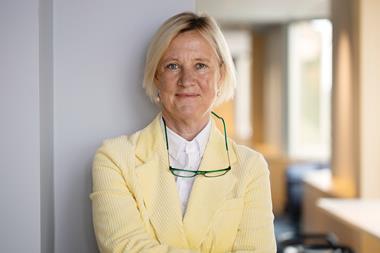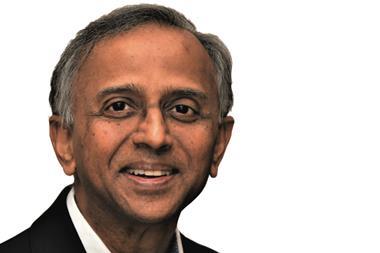“Supervision should be made responsible for pension quality, not just for solvency”
If we could re-invent second-pillar pension sector supervision would it look different? Supervision has grown historically as times have changed and with lessons learned, the chances are that it would look different. If so, it is instructive to see what the differences are. This is all the more true as European developments lead to closer co-operation between supervisors, opening the opportunity to get it right, at least on a European level.
The pension sector could work without supervision. It provides a paid service. Market discipline could enforce efficiency and fraud complaints could keep it in line with the law. Caveat emptor. Therefore, we need an economic or political imperative for the existence of supervision.
Supervision on content
The political imperative is that second-pillar pension funds receive favourable tax treatment. This creates inequalities that warrant supervision to ascertain that the benefits of the tax concessions work as intended. This supervision is especially important where the pension system includes mechanisms of solidarity: changes in regulation and changes in longevity affect solidarity. Supervision should aim at a fair and transparent division of such costs between active participants, passive participants and retirees.
The economic imperative rests on the fact that the pension sector manages money from pension fund members for a very long period. The more the pension fund is trusted, the easier it is for members to give it their money. By representing the interests of beneficiaries, supervision can increase trust efficiently and cheaply. Even though beneficiaries are already represented if the fund is run by social partners, state supervision can add confidence at low cost by providing an impartial outside opinion.
The interests of the beneficiaries are simple - receiving a fair pension at low cost. ‘Fair’ includes an assurance that there will be money to pay the pension and that the pension deal is reasonable. Supervision should therefore concentrate on solvency (the money is there), liquidity (the money is available) and pension quality.
On a macroeconomic level, pension quality can be measured with two numbers - the participation rate and the replacement rate. The first measures the share of potential beneficiaries building up a pension. The second relates to the amount of income retained after retirement. These ratios are unfit to judge individual second-pillar funds, but they can inspire. Second-pillar pension quality could be measured by an opt-in ratio and an average annual return on capital.
The first measures the number of members against the number of those who are eligible to become members. The result depends on a number of factors, ranging from the attractiveness of the pension deal and how it is communicated to prospective members, to legal environment such as opt-in regulation and mandatory participation. The average annual return on capital gives information on the efficiency of the management of contributions paid and cost level. Importantly, cost level should include the cost of regulation. When regulation changes, the cost should be made transparent and should be internalised into the pension deal. Just as important, this rate should cover the whole build-up period - say, an average of 20 years.
Supervision on form
Supervision should make sure that there are mechanisms to take all interests of beneficiaries into account. There should be special attention for a method to optimise and update the opt-in ratio, together with the average annual return on capital. This will determine the fund’s risk appetite: too much risk taken will result in opt-outs; not enough risk taken will produce a low return on capital. Supervision should not set a target level of participatory democracy but, rather, ex-ante ensure that members’ preferences are duly taken into account and that ex-post members are informed of the consequences of their decisions.
Supervision should ensure long-term planning of solvency, combined with short-term planning of liquidity. Market prices are unsuitable for this purpose. As you can see from any long-term graph of a financial benchmark, short-term market movements are largely emotional and their volatility is strongly exaggerated. This should not be a problem with the present level of sophistication and computing power. There already are non-market pricing solutions for all asset classes, except equity and bonds. With some goodwill, solutions can be found for these also. Rather than encourage ‘hidden reserves’ or prescribing strict rules and assumptions, supervision should judge calculations on how realistic they are.
The form of supervision
Supervision should be neutral. Neutrality does not mean that supervision does not affect portfolios. A rule or requirement that has no influence on portfolios is not worth having. Perhaps, counter-intuitively, neutrality means that supervision should be tailor-made for each fund being supervised, because one-size-fits-all rules discourage new or creative solutions.
It is useless to know that a pension fund meets all the rules, but useful to know that the supervisor is (un)happy with the fund’s long-term situation. That situation should not be measured by one number, such as the cover ratio, but by the fund’s ability to pay or to recover. Sponsors’ long-term contractual commitments should therefore count in solvency calculations, modified by the strength of the sponsor.
Supervision should not prejudge the pension deal. Specifically, it should allow the beneficiary of a DC pension to benefit from rules and requirements with the same effect (although not necessarily the same form) as DB pension beneficiaries.
Supervision should be efficient. A supervisory system where there is never a solvency problem or where no pension fund has ever gone broke is, by definition, inefficient, just like a system where continuous solvency problems undermine faith in the system. It is more important to have a mechanism in place whereby beneficiaries (not funds) are helped when an accident does occur, than to prevent accidents at all cost.
Mind the gap
To my knowledge, no European supervisor measures up to the above but, in general terms, some differences between the above and the actual situation are striking. Supervision has sometimes started a life of its own. Rather than reassure beneficiaries by being in control of and working with the sector, some supervisors see pension funds as adversaries and do not even eschew public scaremongering.
Supervision should have more attention for the reaction of pension funds to changed circumstances, be it in longevity or new regulation. The cost should be made explicit, communicated clearly and written off on pension claims immediately. Only in this way will voters understand how such changes affect their pension. If the cost remains hidden, or if pension funds are allowed to ‘make up’ for them, cause and effect will remain separated and not understood.
Supervision should be made responsible for pension quality, not just for solvency. The two are closely connected, but by making supervisors responsible for solvency only, regulators invite a situation where pension quality and solvency are not properly balanced.
Supervisors should not tell pension funds how to solve problems. They should set targets and enumerate problems. They should not impose methods to solve the problems or reach the targets or, even less so, meddle in risk budgets. If they do, they run the risk of becoming responsible when their imposed methods fail.
The supervisory system should encourage long-term, realistic thinking, not box ticking or quarterly reports. It should be principle-based and individually tailored. It should be neutral, rather than based on bureaucratic or political preferences. It should be able to tolerate and handle accidents. After all, if supervision cannot be efficient, who needs it?


















No comments yet